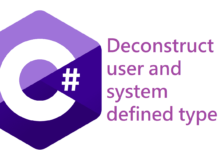Last week I went back to the V1 of the Dsl Tools, and re-did the tutorials. Much simpler than the beta ones, the entire platform is much stabler and parts of it were simplified, being easier to use. The unification of the DSL definition with its presentation definitions in a single file is very welcome. The lack of intellisense/syntax coloring support while writting the templates is one of my complains. The inability to use the DLS’s outside Visual Studio (in scenarios where you want the business user to at least prototype the model) is another serious limitation. Finally, there are also some concepts that are not easy to understand on the first approach, and there seems to be too much “visible plumbing” in the design of languages and its later use.
I personally find the whole Software Factories/Modelling idea very powerfull, and with some ingredients that can help solve this whole quality issue in the Software industry, but while activity in the Software Factories has been plentiful (also in the Architecture Journal issue 9), not much new has been coming up on the web concerning DSL’s and modeling. MS’s DSL blogs also have little activity and there’s no news on the expected book.
Most of the work Create It and myself do involve work around integration and custom software development, frequently around products such as BizTalk or SharePoint, and we don’t market our own products or specialize in any vertical industry. Given this, I’ve tried to find uses for DSL’s in what we do, and mostly I came out with what I call “technical” scenarios. For example, modeling a biztalk schema so that it’s easier to create, or model a structure of sites in SharePoint to automatically provision/update them. The Software Factories that came out also work in this “technical” space, so this helps explaining why they are easier to come up with and develop.
I found very few uses of DSL’s in real “business” scenarios, considering the kind of work we do. The most obvious case is perhaps in building workflows, which is Windows Workflow’s space, and WF in itself is a “technical” DSL without busines specific activities. WF in SharePoint is closer to what I am looking for, specially with its activities to do content approval and routing, focused on the document management space.
This is a topic I would like to discuss with other people interested in modeling. Any feedback?


![[FIX] BizTalk Server 2010, 2013, 2013 R2 & 2016 errors “Class not registered (WinMgmt)” or “Access denied”](https://blogit.create.pt/wp-content/uploads/2018/07/access-black-and-white-blur-270514-218x150.jpg)



















